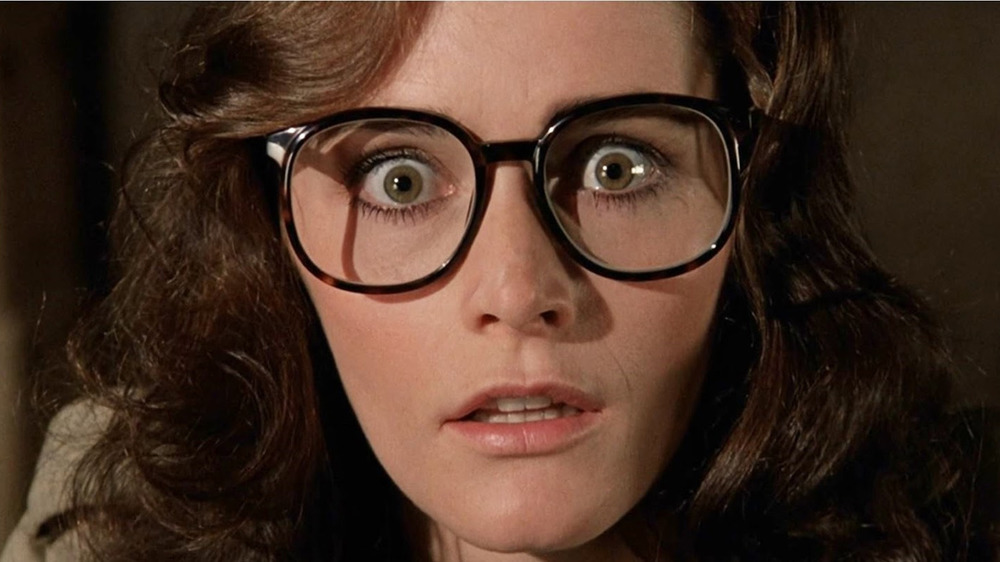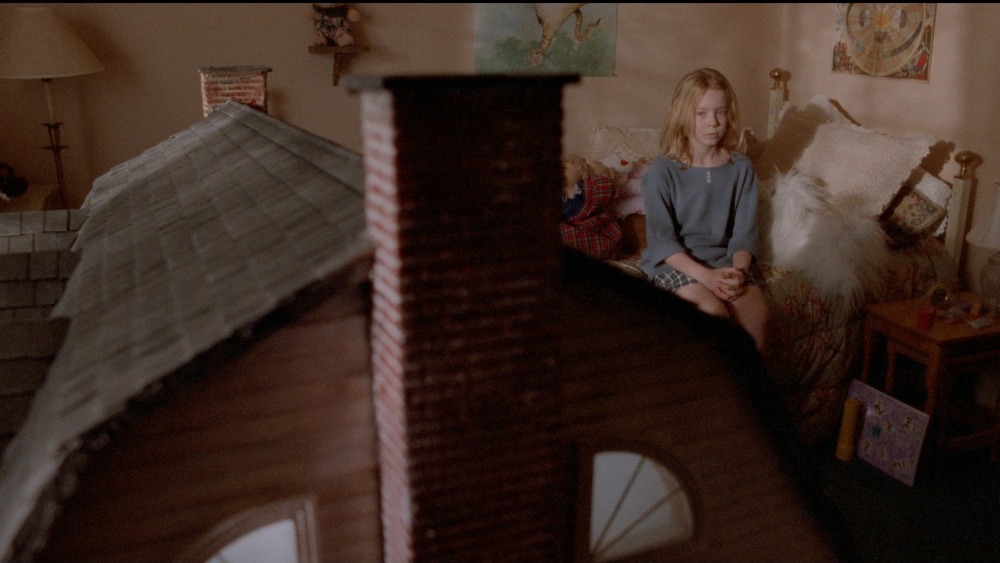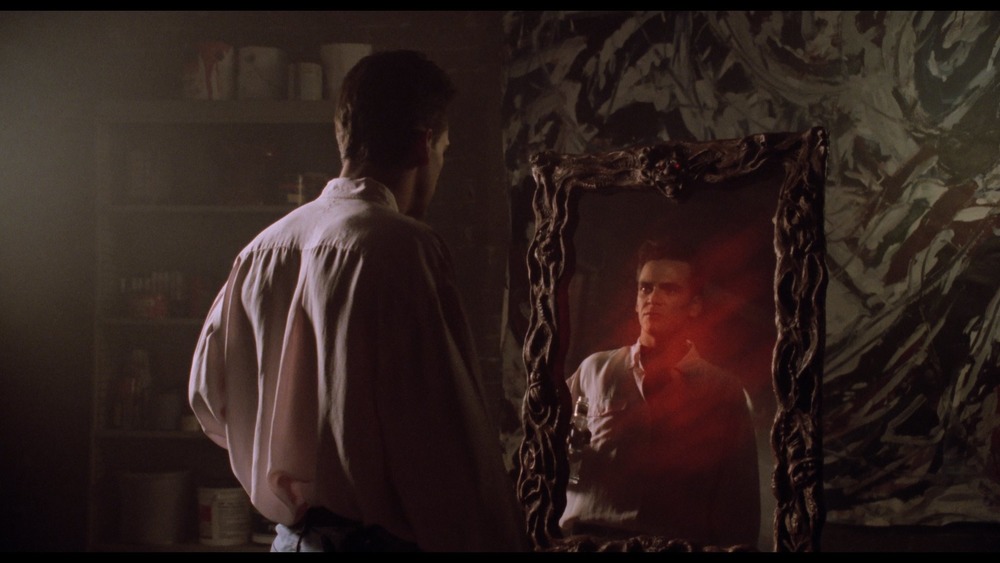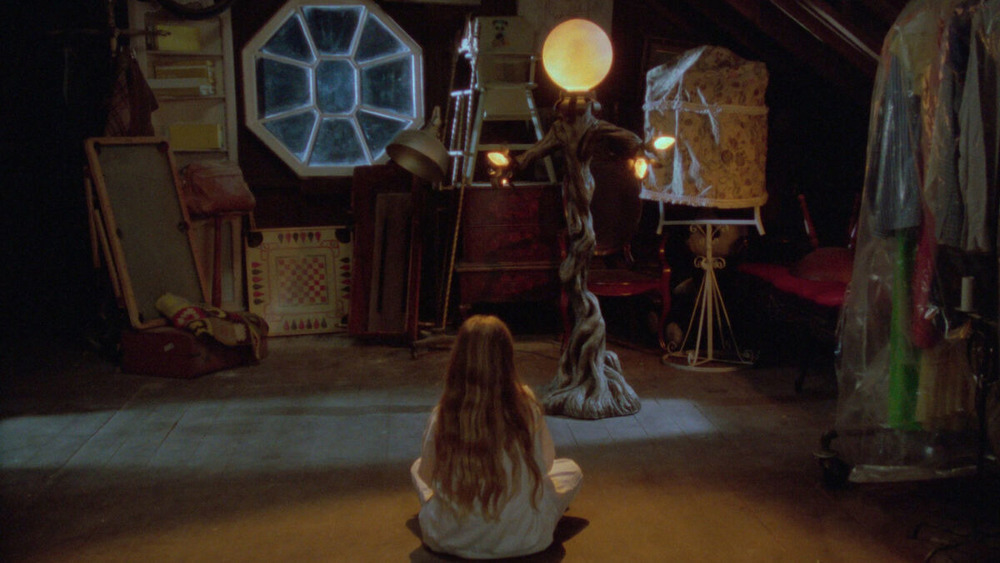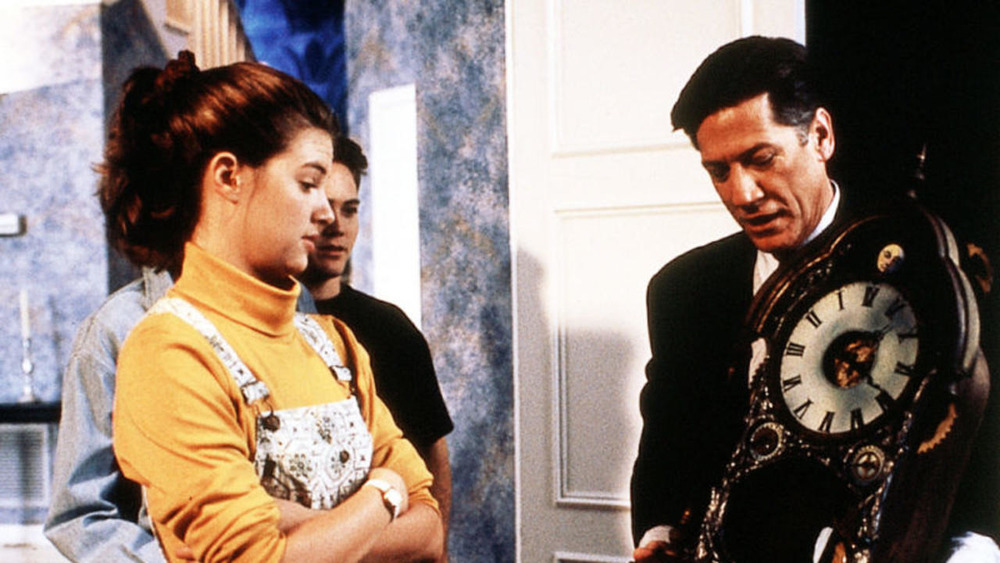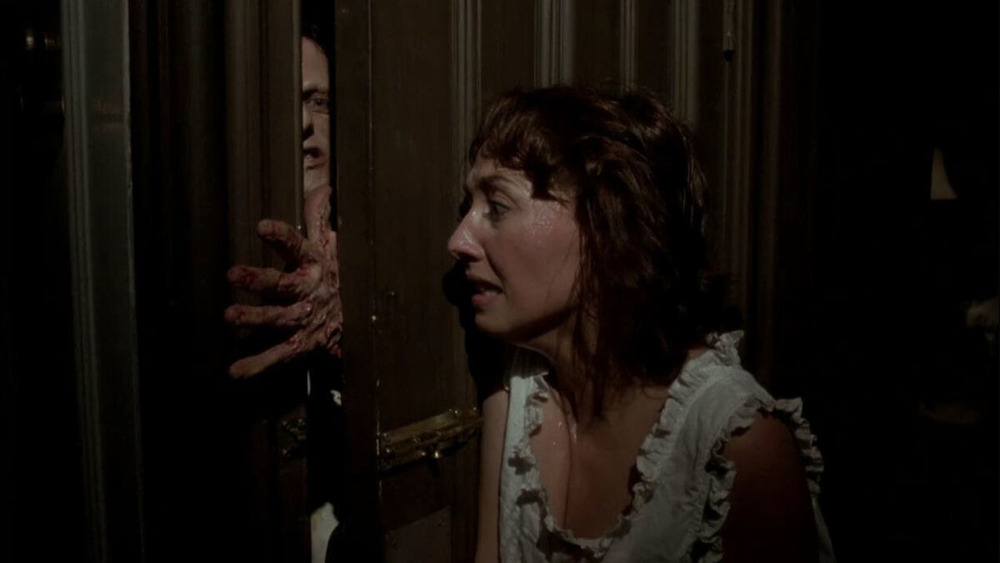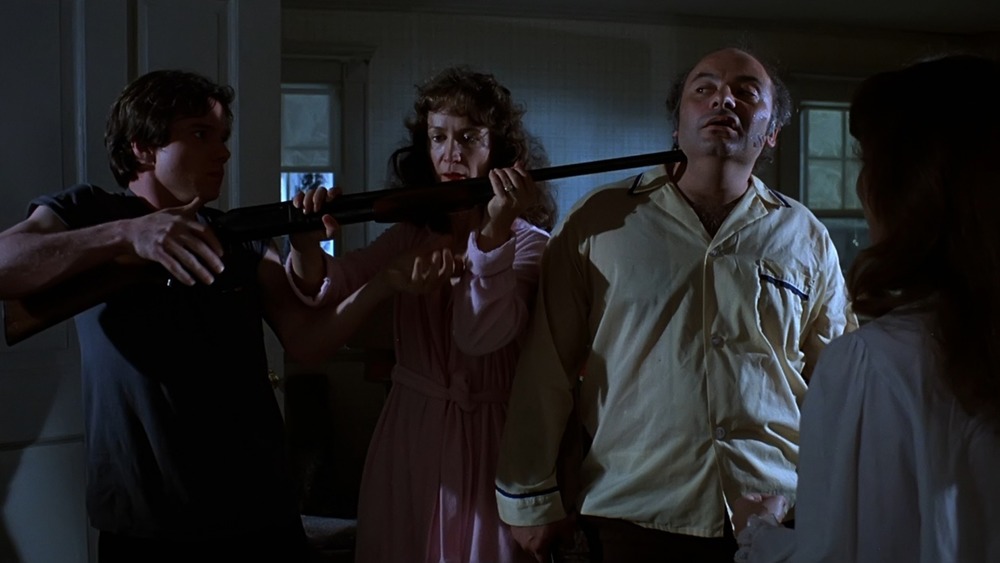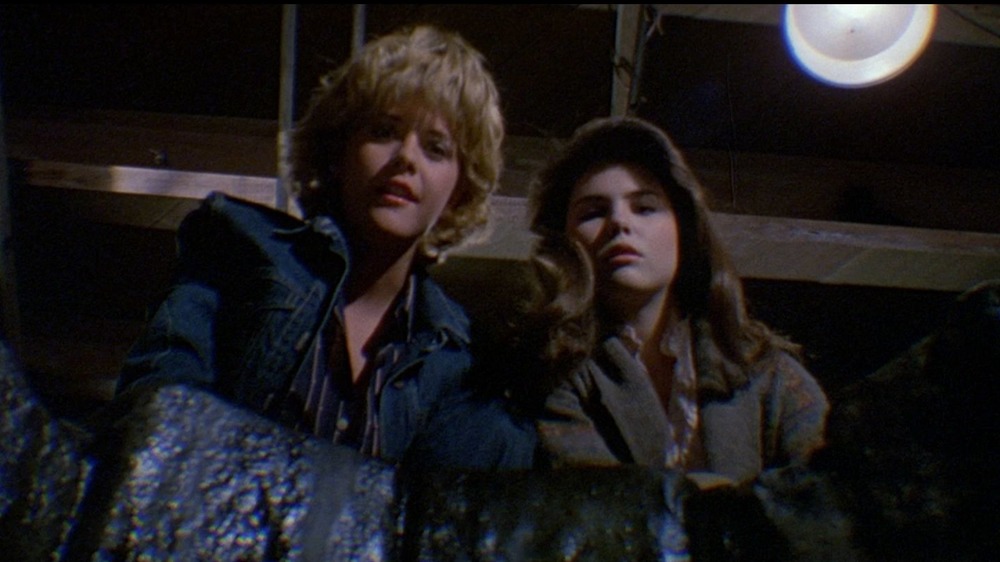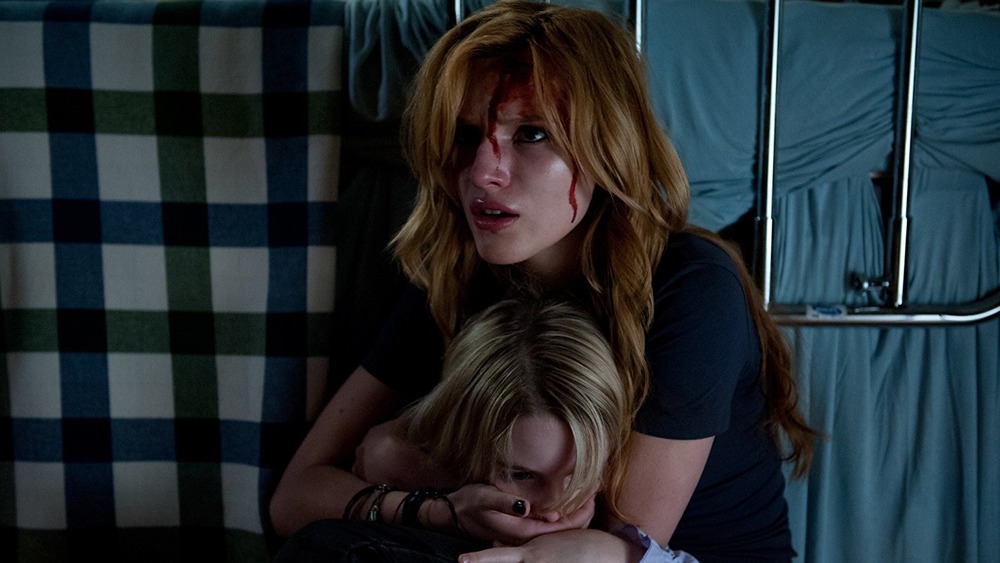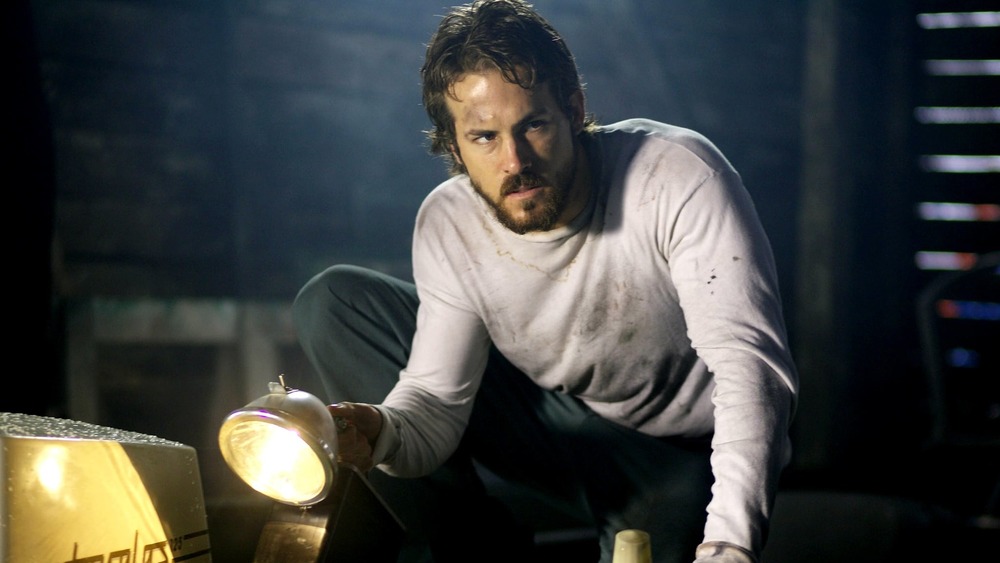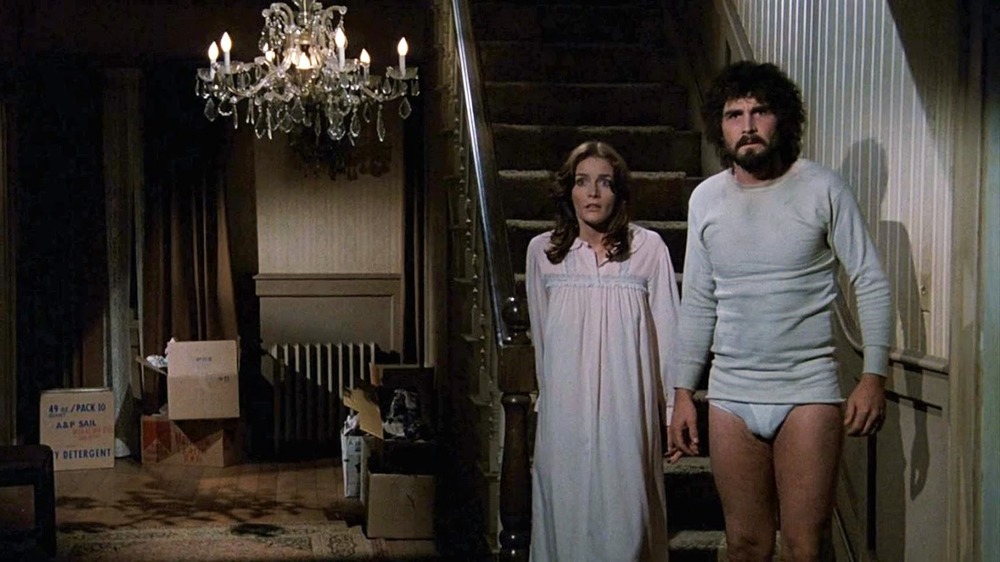The Amityville Horror Movies Ranked Worst To Best
In 1977, a country hungry for true tales of horror and possession got The Amityville Horror, a bestselling book by Jay Anson. It claims to tell the story of what really happened to the Lutz family after they bought a too-good-to-be-true haunted house on Long Island.
Two years later, the hit book became a hit film, and The Amityville Horror and its iconic setting were etched forever into American pop culture. Because it arrived on the cusp of the 1980s horror boom (and the slightly-later VHS boom), Amityville was ripe for franchise building, even if it didn't have the same central characters that other horror staples of the era like Halloween and Friday the 13th could fall back on. The result was a lengthy series of films spanning the 1980s and 1990s (with a brief reboot in the 2000s), each offering a different take on The Amityville Horror. Some of them soar with strange new horrors, others fall flat. Now, we're taking a look back at what worked and what didn't. These are The Amityville Horror films, ranked worst to best.
Please note: While numerous other films bear the "Amityville" name in some form, in the interest of brevity, we chose to focus on the core series of films released as sequels to the 1979 original, plus the 2005 remake and the last major 2010s spinoff.
Amityville Dollhouse (1996)
The last Amityville sequel to use a cursed object as the source of its haunting, Amityville Dollhouse begins from relatively clever footing: The idea that a dollhouse that looks exactly like the infamous Ocean Avenue home in Long Island is the source of the home's evil. It's a neat way to film the Amityville house without actually having to set up a full-sized dwelling. The film also recycles another key element from the original film: It features a newly blended family trying to learn to live together. This is a decent stab at adding a bit more narrative tension.
Sadly, those promising concepts just fall flat when it comes to the execution. The dollhouse itself never really has any function beyond flashing weird lights and sending crude dolls to torment the family. The logic behind the haunting (and how the dollhouse got there in the first place) is shaky at best. Most damningly, the low-budget scares just don't add up to much, even if you're just looking for something to watch as a pure curiosity. In the end, it's a film only for Amityville completists.
Amityville: A New Generation (1993)
The later sequels in the Amityville series move away from the famed house itself. As a result, they often have to contort themselves quite a bit to connect to the original haunting. A New Generation is perhaps the prime example of that level of stretching. The film plays like a horror movie written independently of the Amityville phenomenon, with the connections to the franchise added in only when the filmmakers realized it might get them a few more eyeballs.
Another one of the "cursed object" sequels of the '80s and '90s, A New Generation focuses on a group of artist friends living in a loft, one of whom receives a creepy mirror as a gift from a homeless man he photographs. Of course, the creepy mirror ends up having Amityville roots, and horror ensues. There are some interesting visual ideas at work in A New Generation, but the film falls flat in the back half as its reveals the mirror is actually activating the protagonist's suppressed memories of his own deep Amityville haunting connections. It ends up being convoluted and way too wrapped up in its half-hearted attempt at constructing a new mythology.
Amityville: The Evil Escapes (1989)
Perhaps the most infamous of the Amityville sequels, The Evil Escapes is best remembered by fans as "the haunted lamp movie" because ... well, you can probably guess. The first of the "cursed object" sequels in the series, it focuses on the evil trapped inside a lamp, which almost kills a priest during an exorcism of the Amityville house. It is later sold at an estate sale and shipped off to an unsuspecting family.
Despite the giggles that the idea of a haunted lamp might draw out, there's actually nothing wrong with the basic concept here. The film even has the presence of mind to point out how ugly and garish the lamp itself actually is, and the cast — led by Patty Duke as a mother in over her head — does a solid job of selling the terror. There are even some pretty convincing moments of lamp-driven haunting mayhem. In the end, though, you're only going to get so far with a haunted lamp movie that was made for TV and only vaguely works to recapture the old Amityville magic. The film's opening sequence, in which a half-dozen priests try to exorcise a house that seems to be coming apart around them, is the best part of the film. It's all downhill from there.
Amityville: It's About Time (1992)
When it comes to the Amityville sequels following cursed objects with a connection to the infamous house, the general rule is that the weirder they're willing to get, the better they are. With that in mind, the best of the cursed object sequels is easily It's About Time, a film so named because it's about a haunted clock.
The clock in question once lived in the Ocean Avenue house made famous by The Amityville Horror. But it also once belonged to a French necromancer centuries earlier, and contains dark magic that warps time for the California family that winds up owning it. This leads to strange loops, missing hours, slowed-down time bubbles where seconds can last minutes, and a whole host of other time-related shenanigans. The film still struggles a bit in its third act, and the low-budget nature of it hampers certain things. But Hellbound: Hellraiser II director Tony Randel is behind the camera for this installment, and he's present enough in the process to insert a number of interesting visual motifs that call back to the original film. It's About Time is a bit of a mess, but it's an interesting mess, and that makes it the best of the cursed object sequels.
The Amityville Curse (1990)
Though it's billed as "a return to the most dangerous house in the world," the house at the center of The Amityville Curse is very clearly not the infamous Ocean Avenue home. Instead, it's a different house in Long Island that was once home to a murdered priest, only to later be bought as a fixer-upper by a confirmed skeptic, his psychic partner, and their friends. As they set out to flip the handsome old Long Island home, they discover strange happenings, weird objects in the basement, and a ghost that seems hell-bent on getting a message out to the wider world.
Unlike the sequels that immediately precede and follow it, Amityville Curse focuses on a more direct interpretation of the classic haunted house tale. As a result, it stands on firmer ground than many Amityville films that followed. The house, even if it's not the famous one from the original film, is sufficiently and even delightfully creepy, the backstory has a classic Amityville feel, and the film even finds time to inject some larger worldbuilding that connects the new house to the old one through the idea that the entire community is haunted.
Amityville II: The Possession (1982)
With the story of the Lutz family in the rearview, the second Amityville film decides to take a pseudo-prequel approach to tell the story of a family loosely inspired by the DeFeos, the family who lived in the house before the Lutzes and who all died at the hands of one of their own. In The Possession, the Montelli family moves into the Ocean Avenue house. Eldest son Sonny quickly starts to feel the effects of the place as something dark works its way into his psyche. While his father berates the entire family and his mother begs a local priest for help, Sonny begins to exhibit disturbing behavior, including a sexual desire for his own sister and a tendency towards violence that culminates when he gets his hands on a rifle.
This is all, of course, an attempt at a supernatural explanation for why one member of a family would pick up a gun and murder everyone else in the Ocean Avenue house. For much of its runtime, the slow-burn nature of the film's violence works pretty well. Then comes the third act, when it sputters and dies as the film tries to pivot into being a more exorcism-driven horror tale. It's two-thirds of a decent horror film, at least.
Amityville 3-D (1983)
Because it was becoming a franchise in the early 1980s, the Amityville series had to have a 3-D installment at some point. It fell to the third film in the series to do the honors. The use of 3-D is, unfortunately, the least likable thing about the film (the opening sequence features so many branches in the foreground), but there are actually plenty of things this installment gets right. Amityville 3-D attempts to flip the script on the previous two films, and casts the buyer of the house as a reporter and noted skeptic whose job is to bust scam artists who stage fake hauntings and seances. Of course, once he moves into the Ocean Avenue home, he starts to become a believer ...
Though its back half is rather paint-by-numbers as haunted house movies go, there's a lot of fun to be had in Amityville 3-D. It boasts a solid cast (including appearances by a young Lori Loughlin and Meg Ryan), some very creepy visuals, and a plot that really does put the work in to do something new with the franchise, while still incorporating the original house. Plus, it's willing to go full creature-feature for portions of the third act, something the other films shy away from.
Amityville: The Awakening (2017)
The most recent major Amityville release also features one of the most clever set-ups in the franchise. Set in the present day, The Awakening follows the Walker family, who move into the Ocean Avenue house to be closer to a local doctor in the hopes that he might treat James, their brain-dead son. But the film isn't just set in the present day. It's set in "our" world, a world in which the Amityville books and films have all been made and released. This has rendered the house infamous, even if the stories surrounding it are assumed to be fictitious.
This somewhat meta set-up provides an interesting outlet for the film to explore the infamy around the house, especially since all of its recent owners claim nothing supernatural has ever happened to them. This premise also allows the filmmakers to build some amusing echoes into the haunting that call to mind previous Amityville movie installments. Throw in a solid cast led by Jennifer Jason Leigh and Bella Thorne and you've got a rather competent haunted house film that's not afraid to take chances. Plus, it packs some memorable jump scares.
The Amityville Horror (2005)
Part of a long string of 1970s horror remakes from the early 2000s, 2005's The Amityville Horror now plays as a product of its era. It's got the muted color palette, the jerky sped-up ghost movements, the very obvious set-ups leading into very obvious jump scares, and, of course, very good looking stars to carry the terror forward. In some ways, like so many of these remakes, it feels a little disposable — like you might be better off just watching the original film again.
That may be true, but there's a lot to like about 2005's Amityville, and it all begins with Ryan Reynolds as George Lutz. The core of the Amityville narrative is a father who's slowly driven mad by the house he just bought, to the point that he becomes an entirely different person. Reynolds absolutely sells that transformation by being utterly charming in the beginning of the film, then utterly cold by the end. Plus, in the interest of giving audiences something the original film didn't, this Amityville is actually willing to put the Lutz family in considerably greater peril, including a very tense sequence in which one of the Lutz children is talked into walking across the house's roof by a playful ghost.
The Amityville Horror (1979)
If there's a core philosophy to The Amityville Horror franchise, it's that these hauntings need to be a lot. It's never just one ghost — or if it is, it's one ghost that knows a thousand different tricks. From Jay Anson's original book to every film adaptation that's come along since, the core tenet of this series of films is a sense of throwing everything at an audience and seeing what sticks. Even now, after numerous sequels and spinoffs, no film does that better than the original.
James Brolin and Margot Kidder anchor the film (alongside an absolutely over-the-top Rod Steiger playing a tormented priest) as a happy couple who find the best real estate deal of their lives — only to find that nightmares are part of the bargain. Everyone in the film is absolutely committed to what comes next, as the Lutz family endures everything from swarms of flies to pipes full of black goo to blood oozing from the walls to a demon pig lurking in the window. There's a sense that everyone involved was trying to make the ultimate haunted house movie, and even when the horror elements start to falter, the sense of infectious fun endures. Is it the ultimate haunted house movie? Maybe not, but it's still worth watching all these years later.
